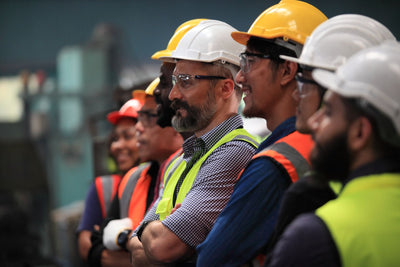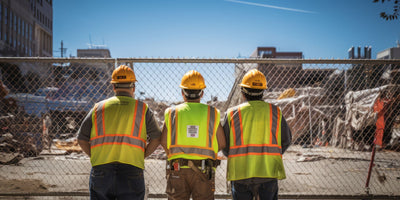Construction sites are dynamic environments, bustling with activity and potential hazards. Amidst the cacophony of machinery and movement, safety must always remain a top priority. One of the most effective tools for promoting safety on construction sites is through the proper understanding and utilization of construction safety signage. However, for these signs to be truly effective, it is essential to train employees on their crucial role. In this comprehensive guide, we'll explore the importance of training employees on construction safety signage and provide practical strategies for implementation.
Understanding the Importance of Construction Safety Signage Training
-
Risk Mitigation: Construction safety signage serves as a visual communication tool to alert workers and visitors to potential hazards on-site. Proper training ensures that employees understand the meaning of each sign, enabling them to identify and mitigate risks effectively.
-
Compliance: Regulatory bodies often mandate the use of specific safety signage on construction sites. Training employees on these regulations ensures compliance with legal requirements, reducing the risk of fines and penalties for non-compliance.
-
Enhanced Awareness: By educating employees on the significance of construction safety signage, awareness of potential hazards is heightened. This increased awareness fosters a culture of safety where workers are more vigilant and proactive in identifying and addressing safety concerns.
-
Accident Prevention: Well-trained employees are better equipped to recognize and respond to safety signage, thereby reducing the likelihood of accidents and injuries on-site. Training ensures that workers understand the importance of adhering to safety protocols, ultimately preventing costly accidents and downtime.
Practical Strategies for Training Employees on Construction Safety Signage
-
Initial Training Sessions: Conduct comprehensive training sessions for all new employees to familiarize them with the various types of construction safety signage and their meanings. Use interactive presentations, demonstrations, and real-life examples to reinforce learning.
-
Regular Refresher Courses: Safety training should be an ongoing process. Schedule regular refresher courses to reinforce the importance of construction safety signage and update employees on any changes or additions to signage protocols.
-
Hands-On Exercises: Engage employees in hands-on exercises where they can practice identifying different types of safety signage on-site. Encourage active participation and provide constructive feedback to enhance learning outcomes.
-
Visual Aids and Resources: Utilize visual aids such as posters, infographics, and educational videos to supplement training sessions. These resources can serve as valuable reference tools for employees to reinforce their understanding of construction safety signage.
-
Scenario-Based Training: Create scenario-based training exercises that simulate real-life situations encountered on construction sites. Challenge employees to identify appropriate safety signage and formulate action plans to address potential hazards effectively.
-
Encourage Open Communication: Foster an environment where employees feel comfortable asking questions and seeking clarification on construction safety signage. Encourage open communication channels to address any concerns or confusion promptly.
Conclusion
Training employees on the crucial role of construction safety signage is imperative for promoting a safe working environment on construction sites. By understanding the importance of safety signage, employees become proactive in identifying and mitigating risks, ultimately reducing the likelihood of accidents and injuries. Implementing practical training strategies ensures that employees are well-equipped to recognize, understand, and adhere to safety signage protocols, fostering a culture of safety that benefits everyone involved in the construction process.






